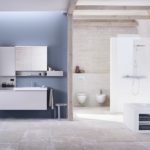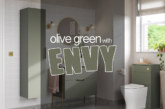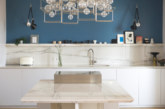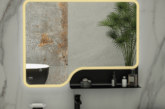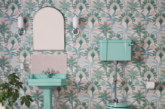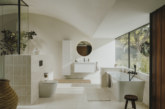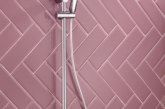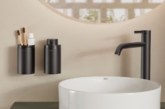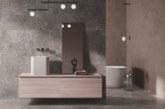Recent research by Geberit has revealed that for many people, the bathroom represents a place of sanctuary, with many looking to the area for an escape from sensory overload and to find a sense of peace and balance. Sophie Weston, Specification & Developer Marketing Manager at Geberit, discusses the significance of wellbeing and identifies the key ingredients needed for incorporating this into the bathroom.
There’s no doubt that the 21st century has brought with it incredible new advancements; there seems to be a hi-tech solution to almost every obstacle in life, yet even still, it’s thought the modern world brings it’s own challenges.
Research by Geberit shows that we spend 4.4 hours on our phones each day, and 78% of people said they spent more hours online than they do sleeping. As these hectic schedules and technology become ever-present in our working lives, it comes as no surprise that 12.5 million working days are lost from work-related stress (Health and Safety Executive, 2016).
So how can housebuilders and developers provide that all important shot in the arm for our ‘always-on’ society and bring sanctuary to the home? After all, a healthy homeowner is a happy homeowner.
A sensory space
Clearly, the ability to create a momentary buffer between ourselves and the world around us, is something that would be beneficial to our overall health and general sense of wellbeing.
Typically, the main areas of focus within bathroom design include materials, textures, colours and patterns. However, there are other aspects that also warrant consideration. More than just being about looking good, these elements directly contribute to us feeling good.
There are four key senses we need to consider; auditory (hearing), visual (sight), Olfactory (smell) and kinesthetic (touch). Let’s look at the impact of each.
Auditory
In today’s high-volume and fast-paced world, we often find our relaxation times thwarted by unwanted noise. In close-quarter environments, the need to minimise bathroom noise is particularly important. To meet this need, advancements have been made, including decoupled prewall installation systems with integrated cisterns and acoustically optimised pipework, such as Geberit Silent-PP. These and other sound minimising solutions, create a quieter and calmer home environment.
Importantly, acoustically-optimised buildings have the scope to enhance revenue for housebuilders. In a survey conducted by Geberit in 2014, 55% of participants agreed that they would happily pay more rent to reduce sanitary noise – providing developers with the scope to withdraw larger margins in return for investment in acoustically designed bathroom solutions.
Visual
This can relate to space-saving solutions such as wall-hung frames which conceal cisterns and pipework. Setting the standards for a modern bathroom, wall-hung technology such as Geberit Duofix opens up the room and creates the illusion of a larger space without knocking a wall down. By increasing space in the bathroom, the room will be much easier to clean and maintain, as well as boast enhanced visual and aesthetic features.
Kinesthetic
Family bathrooms are high traffic areas, which places a premium on hygiene. Automated, touch-free experiences, with sensing technology in taps, lids and flushes, not only minimises the spread of germs but also makes the entire space quicker and easier to clean. Housebuilders seeking the very best in hygienic, sanitary technology should look no further than a no-touch flush. Consider the Geberit Sigma80, a premium and contemporary flush plate, featuring touchless flush actuation, durable LED lighting and a sensor-controlled switch-on function.
Olfactory
Aromas have long been used to lift spirit and restore feelings of wellbeing. Unfortunately, in bathrooms, the opposite is often the case, and traditionally, odours are masked with overpowering chemical sprays. Geberit’s latest DuoFresh technology handles things differently. The air in the space is effectively cleaned by passing unwanted odours through a replaceable carbon filter. The DuoFresh technology is discreetly tucked inside the cistern and can be turned on by the touch of a button by the user.
Now the opportunity lies with housebuilders and developers. Finding the formula for a well-considered, human-centered design in the bathroom could be the key to unlocking better health and wellbeing for your customers and creating a key point of difference for your developments.
Remember, every square inch counts when it comes to new homes, and to maximise space whilst giving the allure of a larger bathroom should be front of mind for housebuilders working with smaller spaces. Something as simple as a wall-hung toilet with a shorter projection can make for a much more comfortable and ergonomic room.

